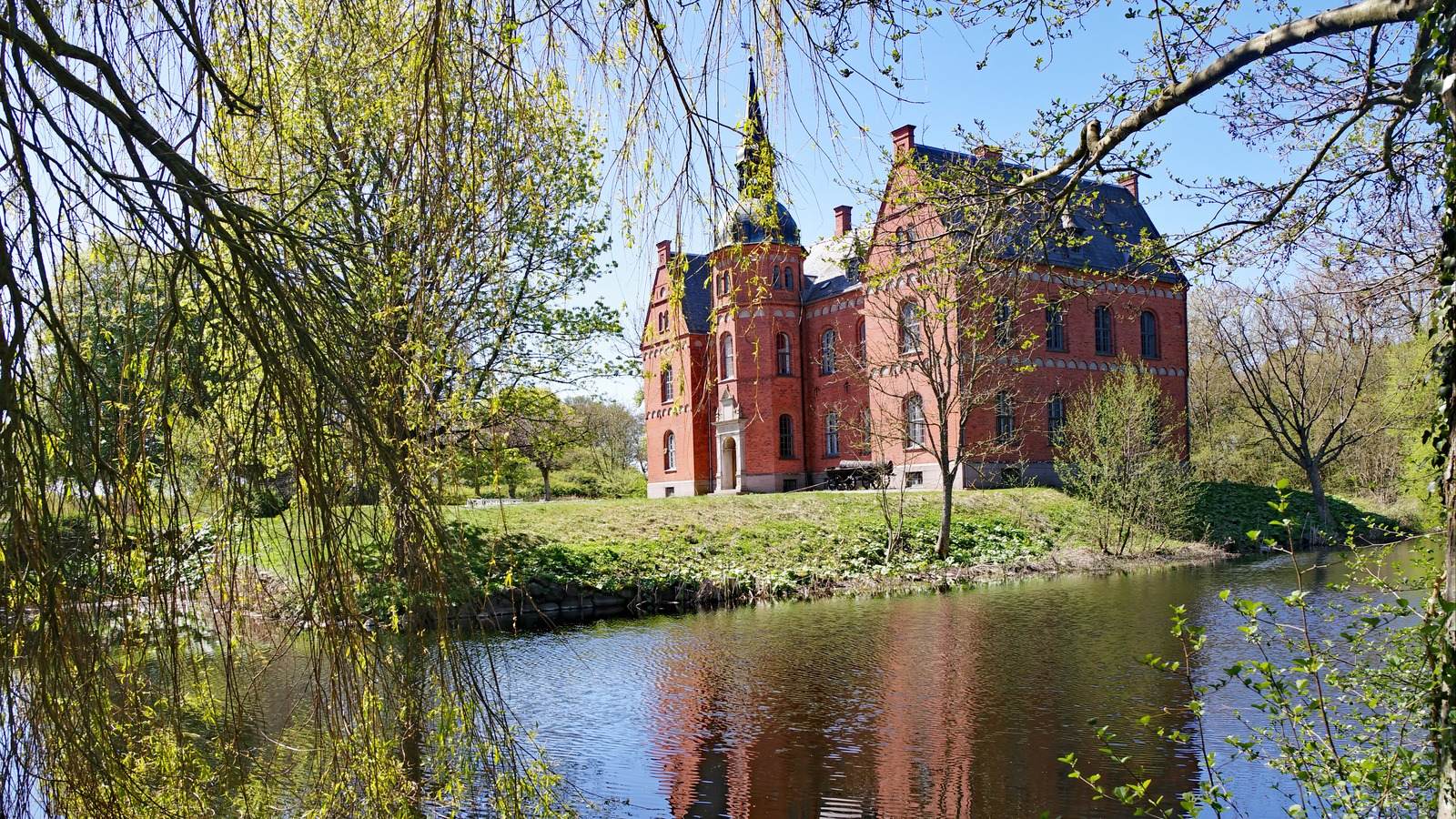Skovsgaard
Eight surprising facts about Skovsgaard Manor
Located in the south of Langeland, Skovsgaard is a potpourri of stories that neatly illustrate the rich, multifaceted history of Danish manor houses; tales of wars, ghosts, busybody peasant farmers and eccentric nobles – and the modern incarnation as a paradise for nature conservation.
1. Farmer acquired Skovsgaard through marriage
It was through his marriage that former farmer Mads Jonsen became lord of Skovsgaard in 1459. He was later ennobled under the name of Hvitax and became a high court judge on Langeland.
2. Ghost in the woods
Legend has it that estate owner Stig Pors was such an evil wretch that his soul was doomed to roam the earth after his death in 1603. It is also said that the ghost of Stig Pors was finally cast out by a priest. Another version relates that his spirit still haunts the woodland close to the manor.
3. Sister in the troll hill (troldehøjen)
The story goes that Stig Pors’ sister, Ellen, was a fine, upstanding Christian woman. It also relates that Ellen was abducted by trolls, and that of all people, it fell to the otherwise wicked Stig Pors to bring his sister back from the troll hill. The landmark is located close to Skovsgaard under the name of Ellens Bjerg (Ellen’s Hill). The final chapter of the saga suggests that Ellen’s spirit – known as “The White Lady” – walks the halls of the manor.
4. Swedish troops ravaged Skovsgaard
During the Dano-Swedish war of 1657–1660, Skovsgaard was so hard hit by Swedish pillaging that 11 of the 23 copyhold farms stood empty.

5. Estate sold to farmers at auction
In 1760, ownership of Skovsgaard passed into the hands of local farmers for the second time. Three brothers, natives of Langeland, purchased the manor at auction. The estate then remained in their family’s possession until 1979.
6. New castle designed for “upstairs, downstairs”
In 1887, the old fortified farm was torn down and a new castle constructed in line with the prevailing standards for the upper classes. The cellar was converted into quarters for the servants, while the two upper storeys and their 21 rooms were reserved for the gentry. Today, Skovsgaard houses a museum centred on the lives and living conditions of the servants.
7. Cat woman left the estate to a foundation
The eccentric final owner of Skovsgaard, the cat-loving Ms. Ellen Fuglede, was apparently deeply suspicious of men, but loved animals and nature. She had no children, so when she died in 1979 she left Skovsgaard to the Danish Society for Nature Conservation. Today, the estate is owned by the Danish Nature Fund.
8. Skovsgaard a sanctuary for Danish nature
At Skovsgaard, you can experience wild, varied and untamed nature, a nature workshop and an organic farm. There are also four permanent exhibitions: The Cart and Carriage Museum, The Tractor and Machine Exhibition, the Upstairs, Downstairs Exhibition, and the Art Exhibition.
The manor tales are written by Linda Corfitz
